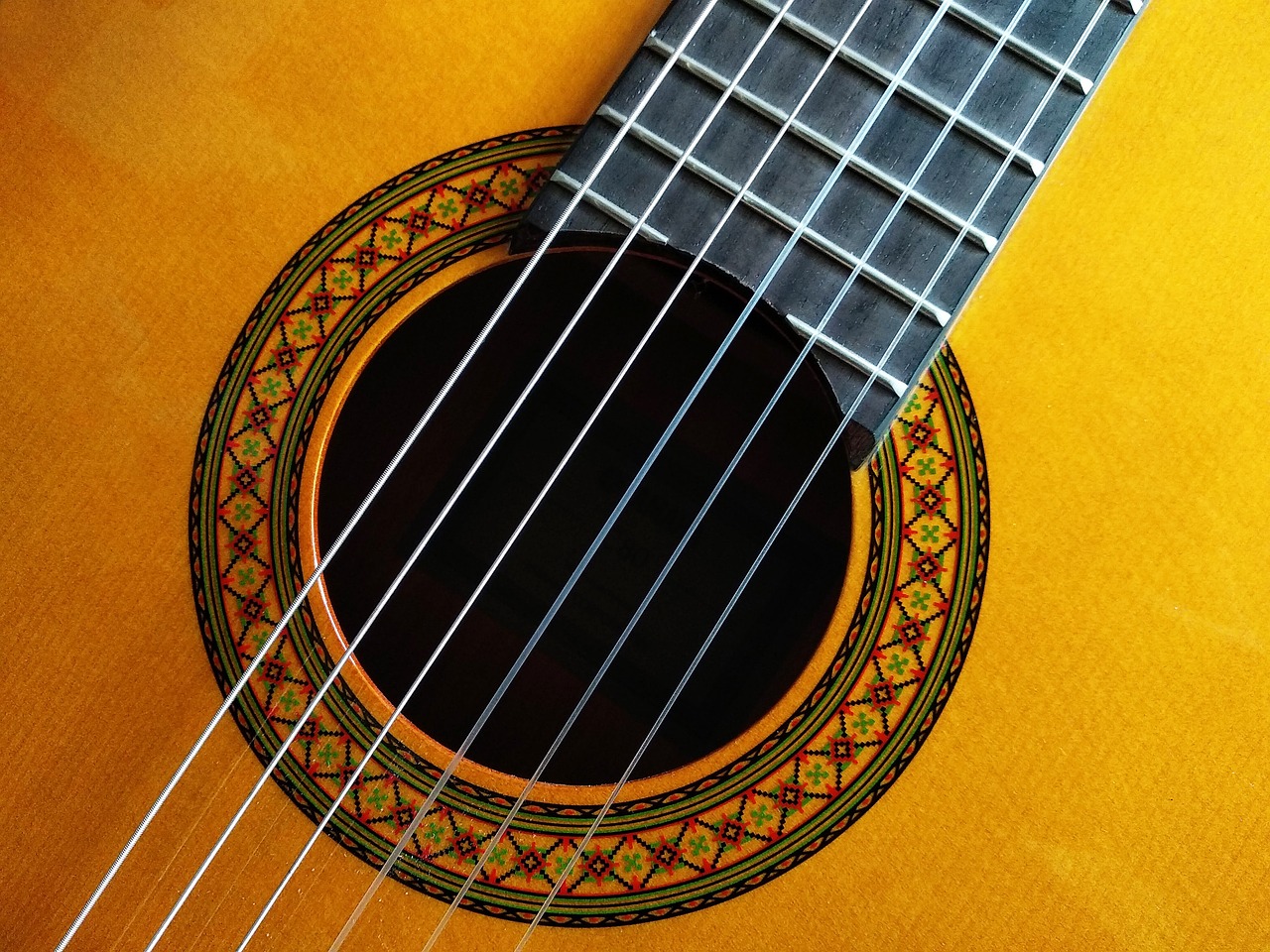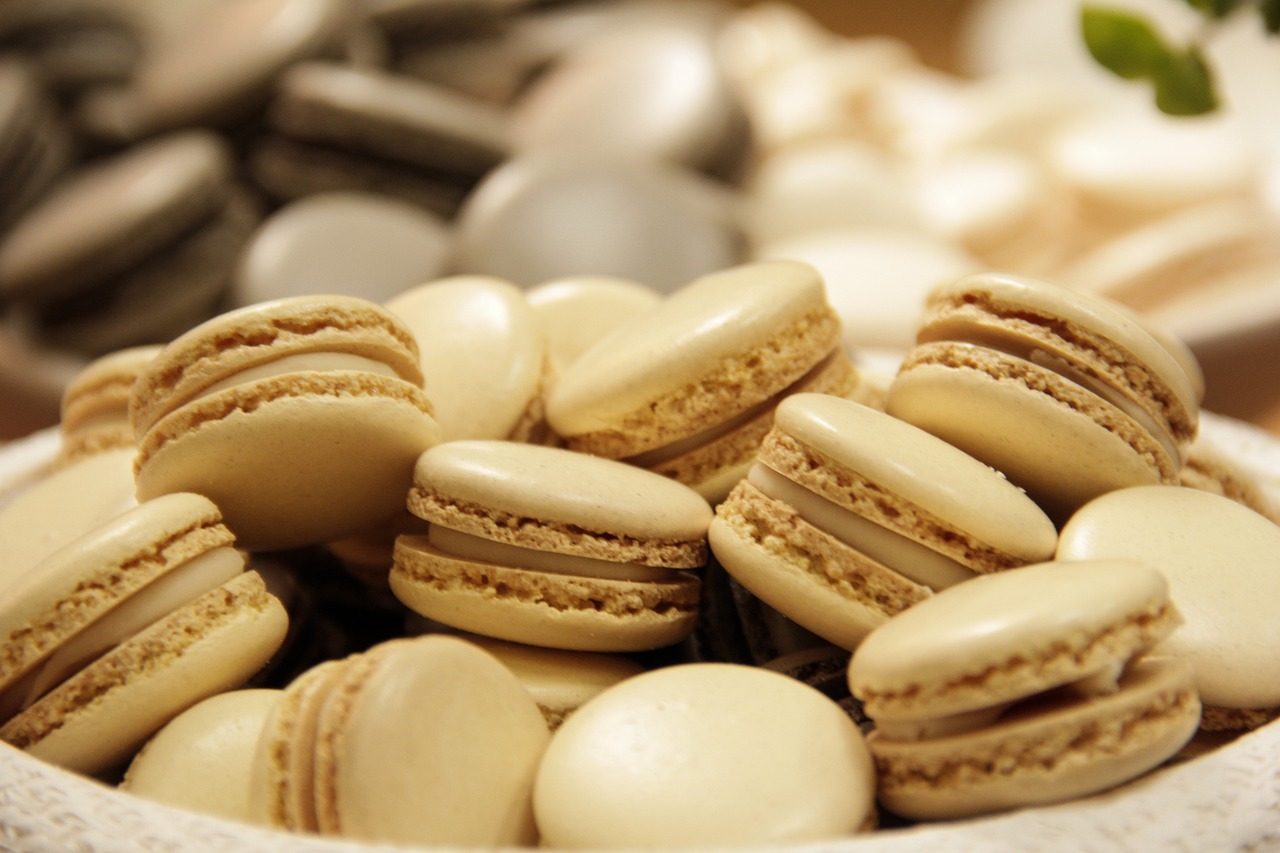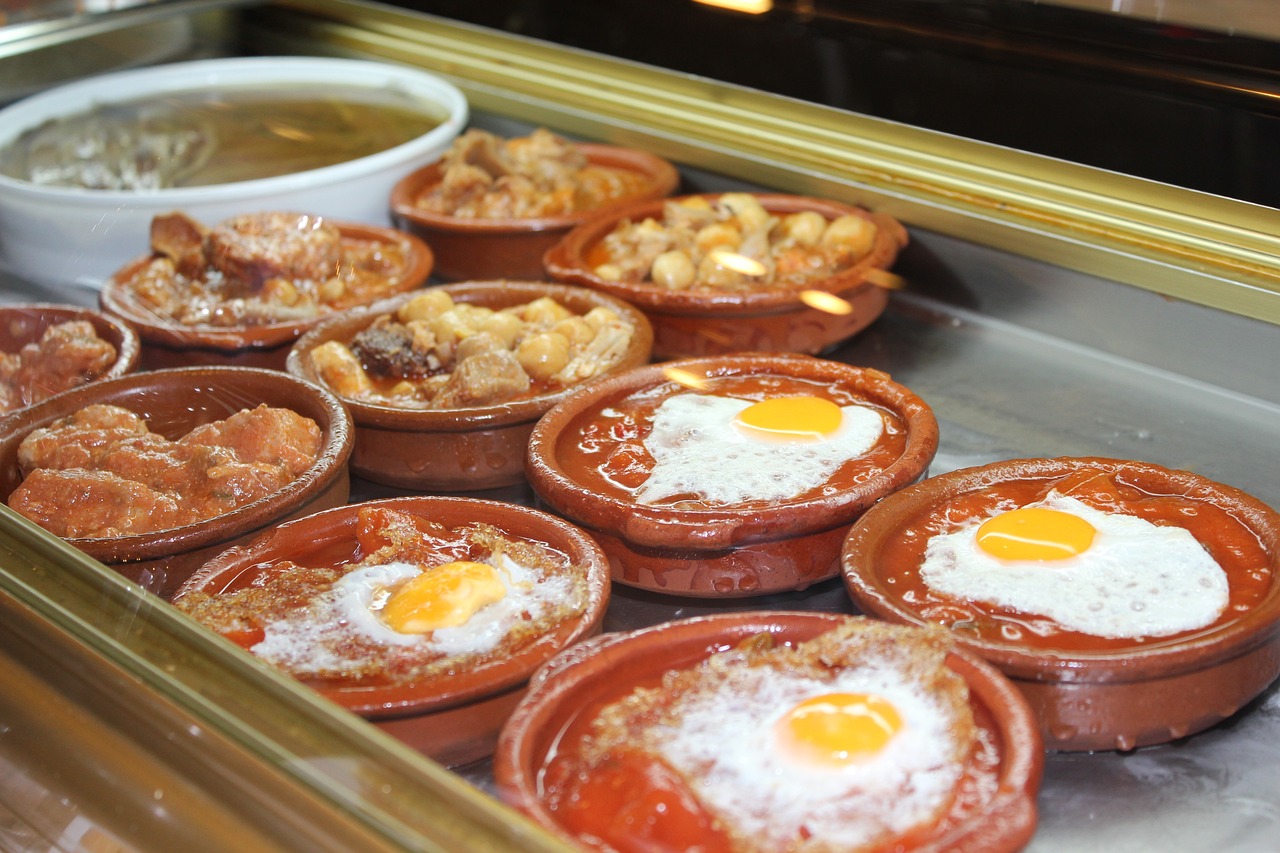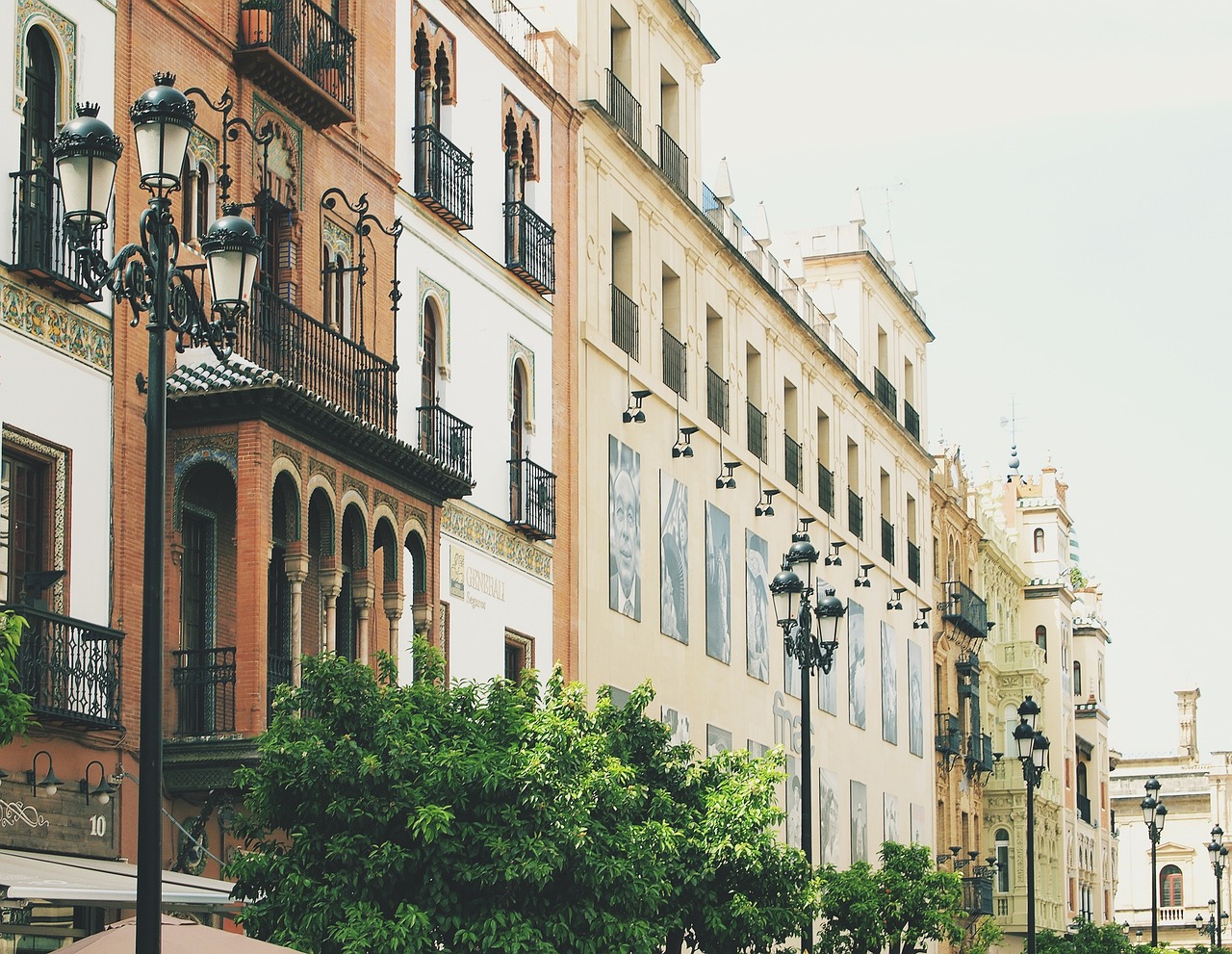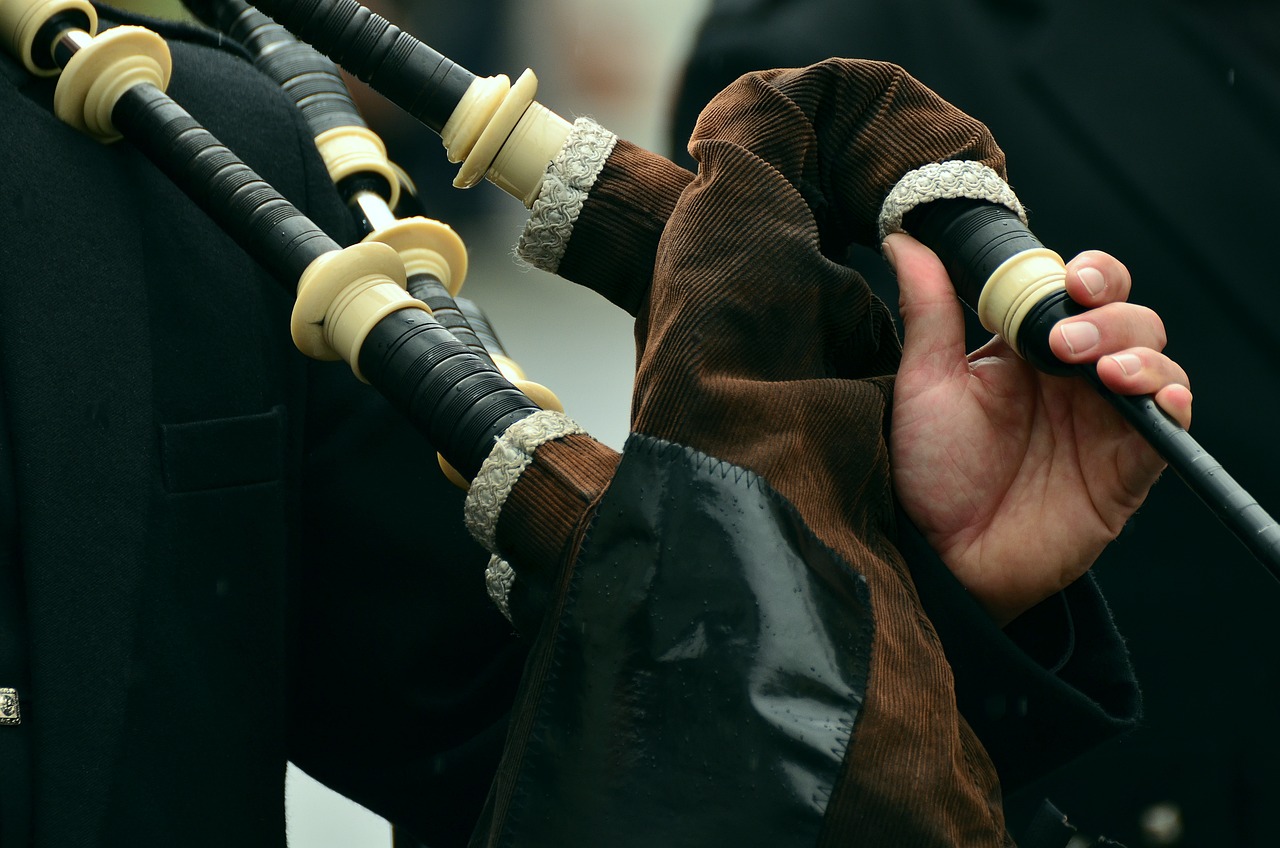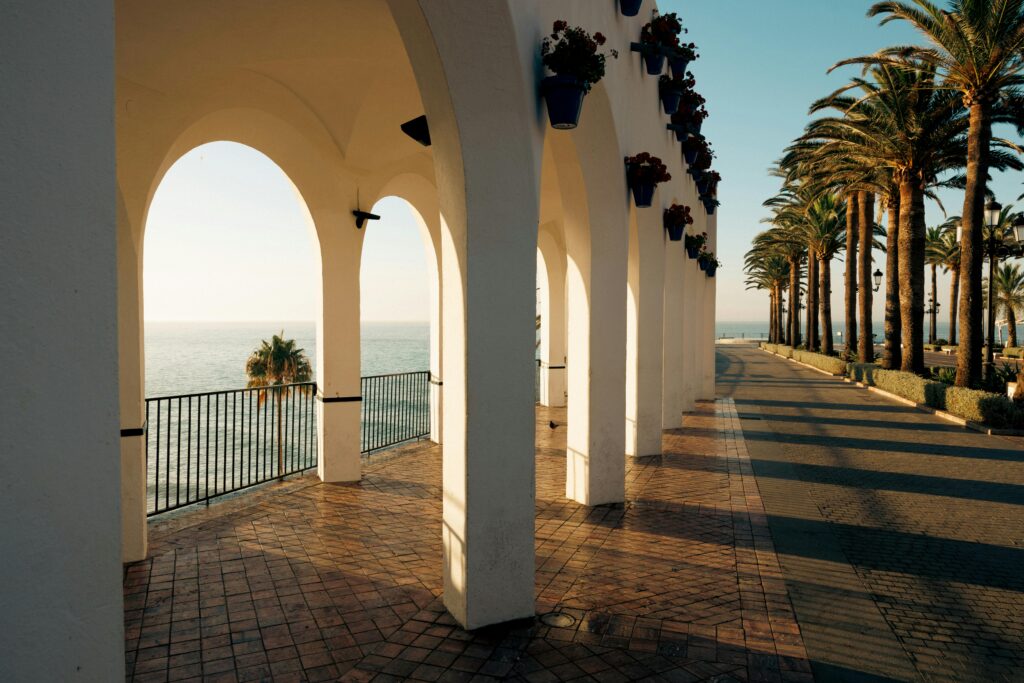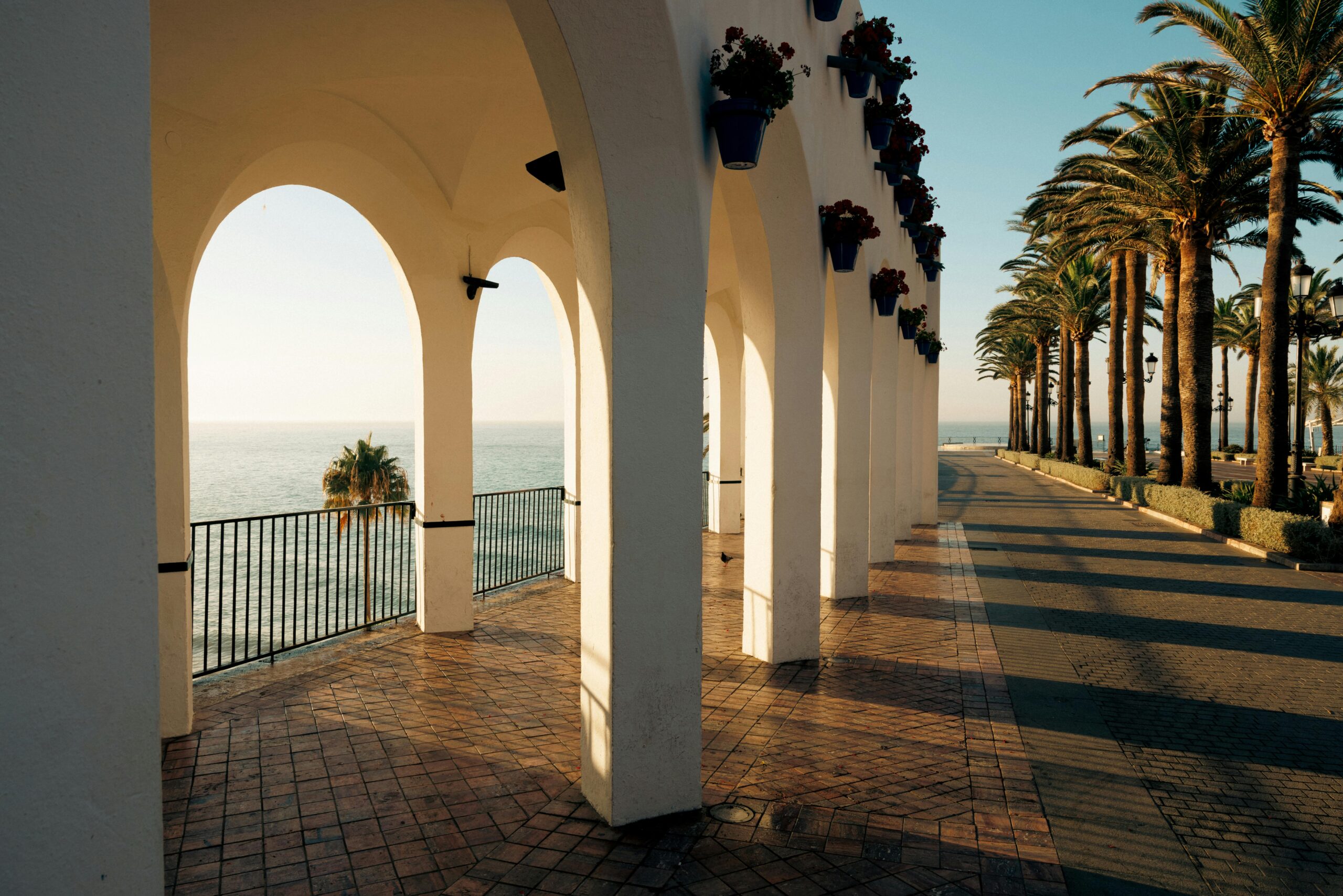
Exploring Madrid's Literary Quarter: A Walk Through History
- Culture, Madrid
- septiembre 6, 2024
Hanna Smith
Writer & Blogger
Madrid’s Barrio de las Letras, also known as the Literary Quarter, is a vibrant neighborhood that has been home to some of Spain’s most celebrated writers, including Miguel de Cervantes, Lope de Vega, and Francisco de Quevedo. Walking through its narrow streets is like stepping back in time, with literary quotes etched into the cobblestones and historic buildings that whisper tales of the Golden Age of Spanish literature. Here’s a guide to exploring this culturally rich area.
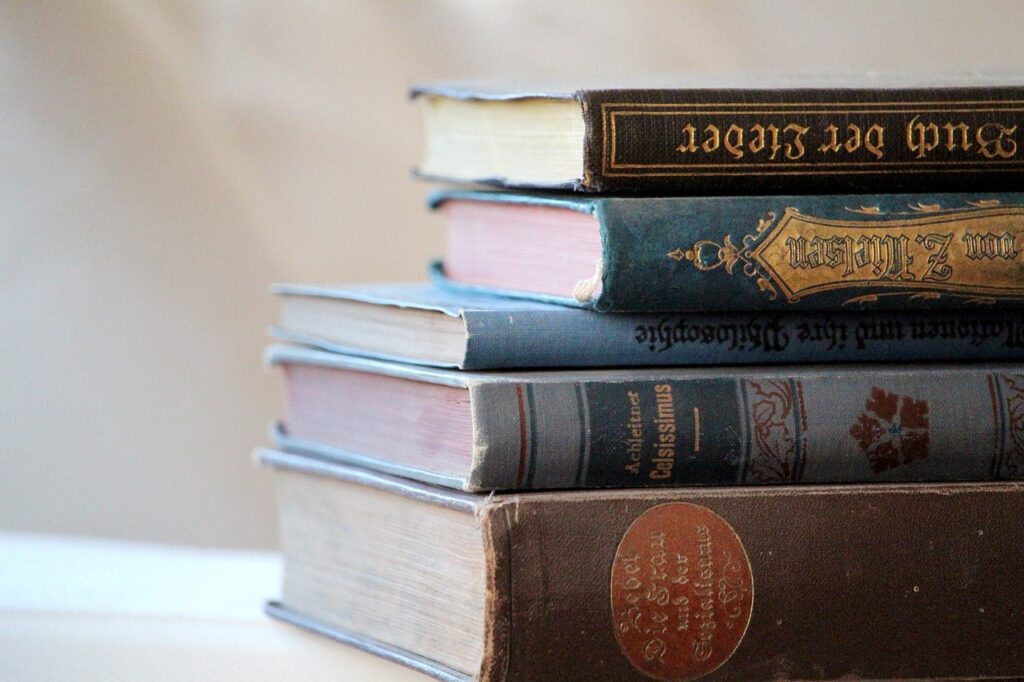
Start at Plaza de Santa Ana
Begin your journey at the Plaza de Santa Ana, the heart of the Literary Quarter. This lively square is surrounded by historic cafes and theaters, making it the perfect spot to soak in the atmosphere. Here, you’ll find statues of Federico García Lorca and Pedro Calderón de la Barca, two of Spain’s literary giants, paying homage to the neighborhood’s rich cultural heritage.
Visit the House of Lope de Vega
Just a short walk from Plaza de Santa Ana, you’ll find the Casa-Museo Lope de Vega, the former home of the famous playwright. This well-preserved 17th-century house offers a fascinating glimpse into the life and times of Lope de Vega. The museum showcases personal artifacts, period furniture, and manuscripts, providing a deep understanding of the man who was often called the «Phoenix of Wits» and the «Monster of Nature.»
Calle de las Huertas
Stroll down the Calle de las Huertas, the main street running through the Literary Quarter. The street is lined with quotes from famous Spanish literary works, engraved into the pavement. As you walk, you’ll be literally treading on the words of Cervantes, Quevedo, and many others. This street is also home to charming cafes, tapas bars, and independent bookstores, making it a perfect place to stop and enjoy the local culture.
Convento de las Trinitarias Descalzas
Visit the Convento de las Trinitarias Descalzas, where Miguel de Cervantes, the author of Don Quixote, was buried. Although the exact location of his remains was a mystery for centuries, they were rediscovered in 2015 within the convent. The site is now a place of pilgrimage for literary fans from around the world.
Ateneo de Madrid
End your walk at the Ateneo de Madrid, one of Spain’s oldest cultural institutions. Founded in 1835, the Ateneo has been a meeting place for intellectuals, artists, and writers for nearly two centuries. The building’s interior is stunning, with its grand staircase, library, and lecture halls that have hosted some of the most important cultural debates in Spain’s history.
Tips for Exploring the Literary Quarter
- Wear Comfortable Shoes: The streets in this historic area are cobblestone, so comfortable footwear is recommended.
- Take Your Time: The Literary Quarter is best explored at a leisurely pace, allowing time to absorb the rich history and vibrant atmosphere.
- Guided Tours: Consider joining a guided tour to gain deeper insights into the lives of the writers who once called this neighborhood home.
- Visit in the Evening: The area comes alive in the evening, with cafes and bars filling up with locals and visitors alike.
Conclusion
Exploring Madrid’s Literary Quarter is a journey through the heart of Spain’s literary Golden Age. From historic homes to vibrant streets, this neighborhood offers a unique blend of history, culture, and modern-day charm. Whether you’re a literature enthusiast or simply looking to experience a different side of Madrid, the Barrio de las Letras is a must-visit.
Recent Posts
- All Posts
- Alicante
- Barcelona
- Beaches
- Bilbao
- Castles
- Cordoba
- Culture
- Day Trips
- Family
- Gastronomy
- Granada
- Hidden Gems
- Ibiza
- Madrid
- Mallorca
- Menorca
- Nature
- Nightlife
- Oviedo
- Seville
- Shopping
- Toledo
- Travel
- Valencia
- Zaragoza

Are you traveling with children?
Take some ideas of plans so you can enjoy the trip as a family. Ideal for everyone!
Category
- Alicante (15)
- Barcelona (15)
- Beaches (11)
- Bilbao (15)
- Castles (2)
- Cordoba (14)
- Culture (59)
- Day Trips (8)
- Family (13)
- Gastronomy (51)
- Granada (15)
- Hidden Gems (15)
- Ibiza (16)
- Madrid (15)
- Mallorca (5)
- Menorca (16)
- Nature (4)
- Nightlife (8)
- Oviedo (15)
- Seville (17)
- Shopping (6)
- Toledo (14)
- Travel (1)
- Valencia (16)
- Zaragoza (13)
Tags
- Adventure (3)
- ARt (5)
- Brunch (1)
- Churchs (5)
- Coffee (2)
- Day Trips (2)
- Festivals (2)
- Flamenco (3)
- Garden (1)
- Hidden Gems (10)
- Hiking (1)
- Historical (18)
- Market (4)
- Museums (2)
- Music (2)
- Nerja (1)
- Parks (3)
- Patios (3)
- Pintxos (2)
- Relax (1)
- Rooftops (3)
- Seafood (3)
- Snorkel (1)
- Spring (1)
- Tapas (8)
- Traditional (1)
- Trail (3)
- Trip (2)
- Viewpoints (2)
- Walking (4)
- Weekend (1)
- Wine (1)
- Winter (1)
Top 10 Best Christmas Markets in Spain: Festive Guide 2024 Travel noviembre 19, 2024 Olivia Jones Writer & Blogger Spain, with its rich cultural heritage and festive spirit, transforms into a winter wonderland during the holiday season. From bustling urban centers to quaint historic towns, the country hosts a plethora of Christmas markets that captivate both locals and visitors. These markets, known as «mercados de Navidad,» offer a unique blend of traditional crafts, delectable treats, and vibrant entertainment, making them a must-visit during the festive period. 1. Plaza Mayor Christmas Market, Madrid Madrid’s Plaza Mayor, a historic square dating back to the 17th century, becomes the heart of the city’s Christmas celebrations. From late November to December 31st, the square is adorned with over 100 stalls offering a variety of items, from handcrafted ornaments to traditional nativity scene figures. The market is renowned for its festive atmosphere, with twinkling lights illuminating the square and street performers entertaining the crowds. Visitors can indulge in seasonal delicacies such as «turrón» (nougat) and «polvorones» (almond cookies), making it a delightful experience for all ages. Destinos Europeos Excepcionales 2. Fira de Santa Llúcia, Barcelona Established in 1786, the Fira de Santa Llúcia is Barcelona’s oldest and most iconic Christmas market. Located in front of the majestic Barcelona Cathedral, the market features over 280 stalls selling a wide array of products, including handcrafted gifts, decorations, and traditional Catalan items. A unique aspect of this market is the «caganer,» a traditional Catalan figurine often included in nativity scenes. The market also hosts various activities, such as workshops and musical performances, providing a comprehensive festive experience. España 3. Mercado de Navidad de Plaza del Pilar, Zaragoza Zaragoza’s Plaza del Pilar transforms into a festive hub from early December to early January. The market boasts a large ice-skating rink, a nativity scene with live animals, and numerous stalls offering artisanal crafts and local gastronomy. The backdrop of the Basilica del Pilar adds to the enchanting atmosphere, making it a picturesque destination for holiday festivities. Sensational Spain 4. Mercado de Navidad de la Plaza del Ayuntamiento, Valencia Valencia’s central square hosts a charming Christmas market featuring stalls with handcrafted goods, festive decorations, and local delicacies. The market is known for its lively ambiance, with street musicians and performers adding to the festive spirit. Visitors can also enjoy the beautifully decorated Christmas tree and the traditional nativity scene displayed in the square. Sensational Spain 5. Feria del Belén, Seville Seville’s Feria del Belén is a specialized market dedicated to nativity scenes. Located near the Cathedral, the market offers a vast selection of handcrafted nativity figures and accessories, reflecting the city’s deep-rooted Christmas traditions. It’s an ideal place for collectors and those looking to add a unique touch to their holiday decorations. Sensational Spain 6. Mercado de Navidad de la Plaza Mayor, Salamanca Salamanca’s historic Plaza Mayor hosts a delightful Christmas market featuring stalls with artisanal crafts, festive foods, and holiday decorations. The square’s stunning architecture, illuminated with festive lights, provides a magical setting for the market. Visitors can enjoy traditional Spanish Christmas treats and find unique gifts while soaking in the festive atmosphere. Sensational Spain 7. Mercado de Navidad de la Plaza de la Constitución, Málaga Málaga’s Plaza de la Constitución becomes a focal point of Christmas celebrations, hosting a market with stalls offering a variety of products, from crafts to culinary delights. The city’s famous Christmas lights, especially along Calle Larios, are a major attraction, drawing visitors from all over to witness the spectacular displays. Sensational Spain 8. Mercado de Navidad de la Plaza Mayor, León León’s Plaza Mayor transforms into a festive market during the holiday season, featuring stalls with local crafts, food, and Christmas decorations. The market is known for its warm and welcoming atmosphere, with the historic square providing a beautiful backdrop for the festivities. Visitors can enjoy traditional music performances and sample regional specialties, making it a memorable experience. Sensational Spain 9. Mercado de Navidad de la Plaza del Príncipe, Vigo Vigo’s Plaza del Príncipe hosts a vibrant Christmas market known for its lively atmosphere and diverse offerings. Stalls feature a range of products, including handmade crafts, festive foods, and unique gifts. The city’s impressive Christmas light displays, which have gained international recognition, add to the market’s appeal, creating a magical setting for holiday shoppers. Sensational Spain 10. Mercado de Navidad de la Plaza Mayor, Burgos Burgos’s Plaza Mayor becomes a hub of Christmas activity, with a market offering a variety of goods, from artisanal crafts to local delicacies. The market is set against the backdrop of the city’s historic architecture, with festive lights illuminating the square. Visitors can explore the stalls, enjoy traditional music, and experience the warm hospitality of the locals during the holiday season. Sensational Spain Tips for Visiting Spanish Christmas Markets Timing: Most markets open in late November and run until early January. It’s advisable to check specific dates in advance, as they can vary each year. Local Specialties: Each region offers unique products and delicacies. For instance, Barcelona is known for its «caganer» figurines, while Madrid offers a variety of nativity scene figures. Cultural Etiquette: Engaging with local vendors and participating in traditional activities can enhance the experience. Learning a few basic Spanish phrases can also be beneficial. Weather Preparedness: While Spain generally has a mild winter, temperatures can drop in the evenings. Dressing in Recent Categories You may also like: Edit Template
Authentic Flamenco Shows in Córdoba: Where to Experience the Best Uncategorized septiembre 14, 2024 Hanna Smith Writer & Blogger Edit Template Córdoba, a city steeped in history and culture, is one of the best places in Spain to experience the passionate art of flamenco. While Seville is often seen as the heart of flamenco, Córdoba has its own rich tradition and offers a more intimate and authentic flamenco experience. From small, cozy tablaos to larger venues, here’s a guide to the best places in Córdoba to witness this captivating performance of dance, song, and music. Córdoba Edit Template 1. Tablao El Cardenal One of the most famous venues in Córdoba, Tablao El Cardenal offers nightly flamenco performances featuring some of the region’s most talented dancers, singers, and guitarists. Located in the heart of the city, near the Mezquita, the venue has a traditional Andalusian courtyard setting that adds to the charm of the experience. The performances here are dynamic, showcasing the fiery energy and emotion that make flamenco so unique. Why It’s Special: The venue is steeped in history, set in an old 16th-century building. Performances feature a variety of flamenco styles, including bulerías, tangos, and fandangos. The intimate setting allows for a closer connection to the performers, making it a deeply moving experience. Tips: Book your tickets in advance, as performances often sell out, especially during peak tourist seasons. Arrive early to get a good seat and enjoy the beautiful surroundings of the courtyard. 2. Arte y Sabores de Córdoba For a unique combination of flamenco and local cuisine, Arte y Sabores de Córdoba offers an experience that combines Andalusian gastronomy with an authentic flamenco performance. The venue is located inside the Arab Baths of Santa María, adding an extra layer of historic ambiance to your evening. You can enjoy a selection of traditional tapas and wines while watching a mesmerizing flamenco show. Why It’s Special: The setting in the former Arab Baths creates a unique and historic atmosphere. Enjoy the local flavors of Córdoba with dishes like salmorejo and jamón ibérico as part of your evening. Performances feature both traditional and modern flamenco, showcasing a range of styles and expressions. Tips: Make a reservation for both the show and the meal to ensure you have the full experience. Try the local wines that are offered as part of the dinner package for an authentic taste of Córdoba. 3. Peña Flamenca Fosforito For those looking for a more local and traditional experience, Peña Flamenca Fosforito is a flamenco social club where locals gather to celebrate the art of flamenco. Named after Antonio Fernández Díaz “Fosforito”, a legendary flamenco singer from Córdoba, this venue offers a more informal and intimate setting where you can witness flamenco performances that are deeply rooted in the community. Why It’s Special: The performances here are raw and authentic, often featuring local talent. It’s a great place to experience cante jondo, the deepest and most expressive style of flamenco singing. The atmosphere is friendly and welcoming, offering a true taste of Córdoba’s flamenco culture. Tips: Peña Flamenca Fosforito often hosts special events and festivals, so check the schedule in advance for unique performances. This venue is less touristy than others, making it a great option for those looking for a more authentic, local experience. 4. La Bulería La Bulería is a popular flamenco bar in Córdoba where you can experience live flamenco performances in a lively and intimate setting. Known for its vibrant atmosphere, La Bulería attracts both locals and visitors, making it a fantastic place to immerse yourself in the passionate energy of flamenco. The small size of the venue ensures that every seat offers a great view of the performers. Why It’s Special: The venue’s small size creates an up-close experience with the performers. The lively and energetic atmosphere makes it a great spot for a night out with friends or family. It’s a more casual and relaxed environment compared to larger tablaos, offering a fun and spontaneous flamenco experience. Tips: Shows start late in the evening, so plan accordingly for a true flamenco night out. Arrive early to secure a good spot, as seating is limited. 5. La Casa de la Memoria If you’re looking for a deeper understanding of flamenco’s roots and history, a visit to La Casa de la Memoria is a must. While not exclusively a flamenco venue, this cultural center in Córdoba often hosts flamenco shows alongside exhibitions and events that delve into the history of this iconic Andalusian art form. It’s a great place to learn more about the evolution of flamenco while also enjoying a top-notch performance. Why It’s Special: The focus on cultural preservation adds a meaningful dimension to the flamenco performances. The venue regularly hosts lectures and workshops on flamenco, making it ideal for those looking to learn more about the art form. The intimate performances often feature both established and up-and-coming flamenco artists. Tips: Check their event schedule in advance, as performances are not held every night. Consider attending one of the workshops or lectures to gain deeper insight into flamenco culture. Conclusion Córdoba offers a wide range of venues where you can experience authentic flamenco performances, from historic tablaos to local social clubs. Whether you’re looking for a vibrant night out or a more intimate, traditional experience, Córdoba’s flamenco scene will captivate you with its passion and artistry. So grab a seat, tap your feet, and let the soulful sounds of flamenco transport you into the heart of Andalusian culture. Recent Categories You may also like: Edit Template
